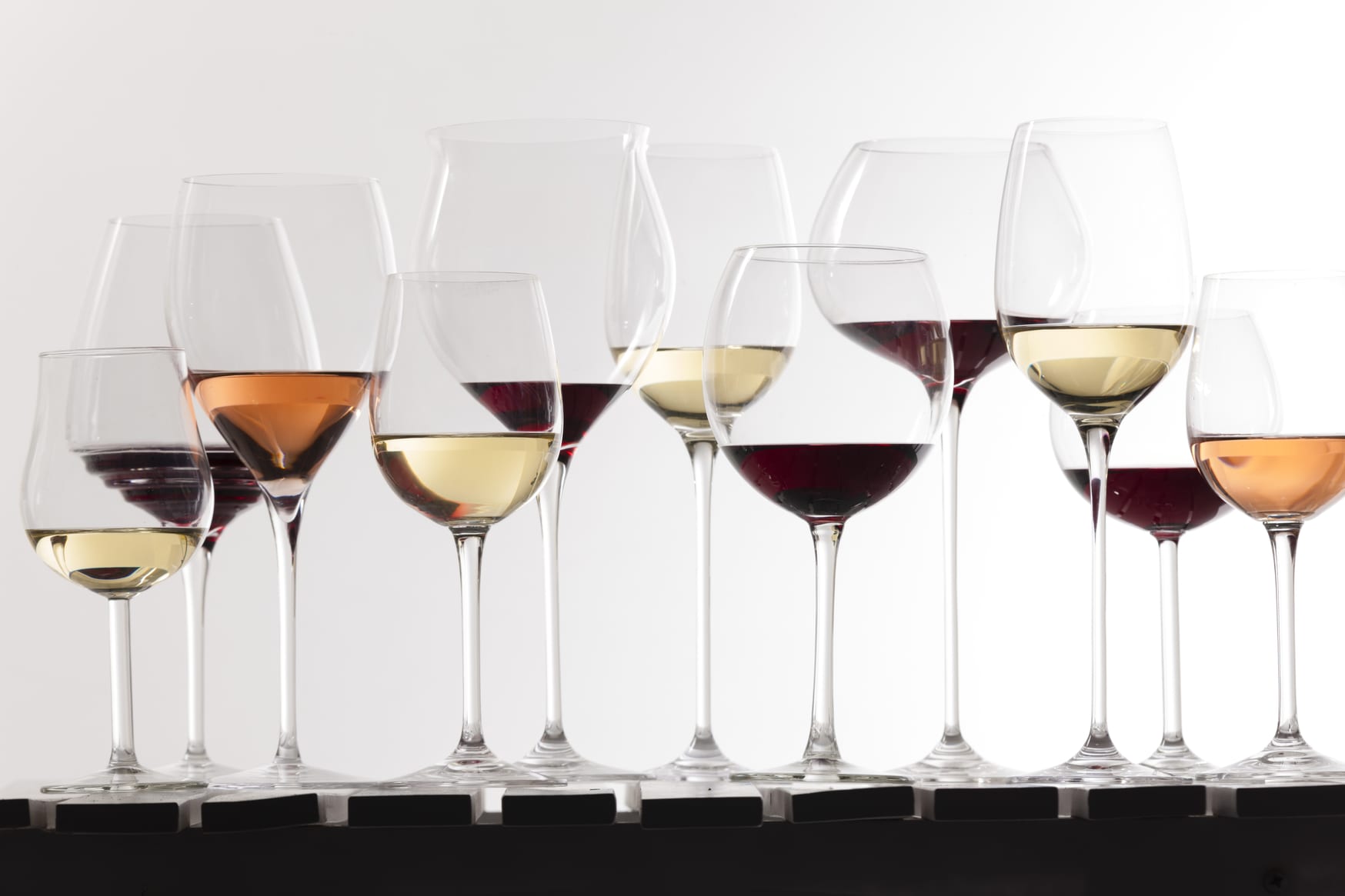How to Keep the Wine
Before storing a wine, get some information on how it should be consumed. Some wines don’t gain anything from being kept in bottle, since they are already ready to be drunk when they are placed on the market. Some examples are wines produced in the Vinhos Verdes region and red wines from Alentejo and Ribatejo.
If you wish to build a cellar, it is important you choose the wines according to your personal taste. The number of existing bottles should be proportional to your consuming habits.
The cellar should be an open space, protected from light and temperature fluctuations (which should be between 7ºC and 13ºC). When there are major temperature fluctuations, the wine may escape through the bottle’s cork or capsule, meaning the wine heated or the cork overdried.
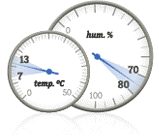 Air humidity is another aspect to consider: it should be between 60% and 75%. If the place where the wine is going to be stored is too humid, you may buy lime blocks to absorb humidity or a dehumidifier. If, on the other hand, you need to increase air humidity, it is best to water the floor (if possible). To make sure of the temperature and humidity levels, you should get a thermometer and a hygrometer. A more expensive option is to get a refrigerator cellar, where temperature and humidity are constant and easily controlled.
Air humidity is another aspect to consider: it should be between 60% and 75%. If the place where the wine is going to be stored is too humid, you may buy lime blocks to absorb humidity or a dehumidifier. If, on the other hand, you need to increase air humidity, it is best to water the floor (if possible). To make sure of the temperature and humidity levels, you should get a thermometer and a hygrometer. A more expensive option is to get a refrigerator cellar, where temperature and humidity are constant and easily controlled.
The cellar should have good air circulation to quickly remove unwanted smells (such as, for instance, the musty smell).
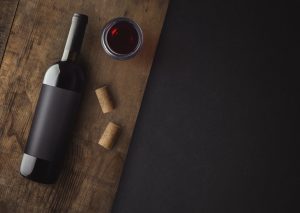 Once in the cellar, the wine should be moved the least possible, so the ideal is to plan how you are going to arrange the bottles before you start storing them. Usually, the bottles are kept horizontally so that the wine stays in contact with the cork. This way, the cork won’t dry and let air in. The best bottles should be nearer the ground, since it is the most humid area in the cellar. Tawny Port, Madeira and other fortified wine bottles should be stored vertically, since they are made up of elements that may damage the corks when in permanent contact.
Once in the cellar, the wine should be moved the least possible, so the ideal is to plan how you are going to arrange the bottles before you start storing them. Usually, the bottles are kept horizontally so that the wine stays in contact with the cork. This way, the cork won’t dry and let air in. The best bottles should be nearer the ground, since it is the most humid area in the cellar. Tawny Port, Madeira and other fortified wine bottles should be stored vertically, since they are made up of elements that may damage the corks when in permanent contact.
Open the Wine
 The corkscrew is an important tool for opening a bottle. Its main purpose is to remove the cork that covers the wine. There are numerous types of corkscrews, but the best one is not the most beautiful; instead, it is the one that removes the cork vertically and has a long, sharp screw. When the cork is removed vertically there are less chances of breaking. If the cork breaks, its little fragments will fall into the wine and create an unpleasant situation, though not harmful to the wine.
The corkscrew is an important tool for opening a bottle. Its main purpose is to remove the cork that covers the wine. There are numerous types of corkscrews, but the best one is not the most beautiful; instead, it is the one that removes the cork vertically and has a long, sharp screw. When the cork is removed vertically there are less chances of breaking. If the cork breaks, its little fragments will fall into the wine and create an unpleasant situation, though not harmful to the wine.
 The technique to open the bottle depends on the type of wine. Still wines are sealed with foil at the top of the bottle. The first step is to cut the foil with a knife (or with the built-in knife corkscrews usually have). It should be cut below the neck of the bottle and you can either remove the entire foil or just the part above the neck. If the wine is going to be decanted, one usually removes the entire foil to have a better look at the wine and bottle. If, on the other hand, the bottle is going directly to the table, one usually removes just the upper part of the foil. The following step is to clean the upper part of the bottle with a clean and dry cloth to eliminate any dirt. Insert the corkscrew downright, carefully, without totally perforating the cork, in order to avoid spilling cork pieces into the wine. After that, remove the cork pulling it slowly and in a single movement.
The technique to open the bottle depends on the type of wine. Still wines are sealed with foil at the top of the bottle. The first step is to cut the foil with a knife (or with the built-in knife corkscrews usually have). It should be cut below the neck of the bottle and you can either remove the entire foil or just the part above the neck. If the wine is going to be decanted, one usually removes the entire foil to have a better look at the wine and bottle. If, on the other hand, the bottle is going directly to the table, one usually removes just the upper part of the foil. The following step is to clean the upper part of the bottle with a clean and dry cloth to eliminate any dirt. Insert the corkscrew downright, carefully, without totally perforating the cork, in order to avoid spilling cork pieces into the wine. After that, remove the cork pulling it slowly and in a single movement.
Sparkling wines usually don’t need to be opened with a corkscrew. As they have gas, they need special handling when removing the cork, since it may be projected and spill the liquid. In sparkling wines, the cork is protected with cage and foil, which must be removed when opening the bottle. It is convenient to always have one hand holding the cork. Tilt the bottle and hold it with one hand; with the other hand, gently turn the cork. Gas pressure should slowly and gently push the cork outside the neck of the bottle. Experienced users may open the bottle with a sabre or sharp knife: hold the bottle at a 45º angle and hit it slightly below the cork.
If one wishes to open a very old bottle, the cork may break or disintegrate. If it breaks, you should insert the corkscrew once again, push it against the inside wall of the neck of the bottle and slowly pull the cork. If this doesn’t work, the other option is to push the cork making it fall into the wine: it is unpleasant, but you can then filter the wine. To avoid breaking or disintegrating the cork, you may use a special set of tongs, with arms that adjust to the wine’s neck. You should heat the tongs in a fireplace or stove until they are red hot and then close them around the neck of the bottle (above the wine and below the cork) for a minute. Then, remove the tongs and pass a wet cloth in the same spot: the sudden change in temperature makes the glass crack and break. Hold the top of the neck of the bottle and remove it as if it were a cap.
Serve The Wine
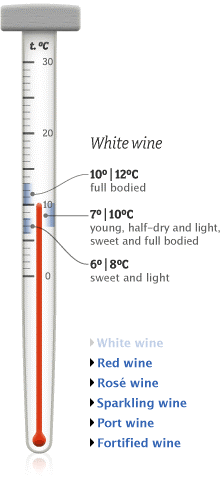 You don’t need to be a wine expert to correctly serve wine. If you know some tips and basic principles, you may serve wine as a professional. The first step is to choose a wine that is appropriate not only to the dish but also to your and your guests’ taste.
You don’t need to be a wine expert to correctly serve wine. If you know some tips and basic principles, you may serve wine as a professional. The first step is to choose a wine that is appropriate not only to the dish but also to your and your guests’ taste.
Some specialists support an idea that is not completely new: white wines should be served before the red ones. On the other hand, full bodied, sweet wines should be tasted at the end of the meal, though you may serve sweet, fresh white wines as appetisers. Nowadays, one may say that there are no rules: there are the classic combinations, but also the innovative and revolutionary ones. You may combine wines according to your preference and imagination. You should only be careful to balance the different aromas and flavours.
The best way to chill a bottle is to fill a bucket with ice and cold water (in equal portions) and dip the bottle in it, instead of putting it in a refrigerator or freezer. In about eight minutes the temperature of the wine will go from 18ºC to 3ºC. If the bucket is not deep enough, dip the neck of the bottle first and then, after a few minutes, turn the bottle. You can also use a cooler bag, which is filled with frozen jelly and quickly chills the bottle.
If you wish to raise the wine’s temperature, you may leave the bottle in the kitchen to let it gradually and slowly heat up. If you need a quick solution, you may fill a bucket with hot water and dip the bottle in it. In about eight minutes, temperature will go from 13ºC to 18ºC. However, you should be careful not to overheat the wine and, if you intend to decant it, do it before heating the wine.
The idea of serving red wine at room temperature works well most of the time; however, if you live in a hot country, it might be an unpleasant experience. So, don’t be amazed if you see a friend of yours take a bottle of red wine out of the refrigerator.
There are appropriate glasses for each type of wine. To get maximum pleasure when tasting wine, check if the temperature is correct. You should also check if the wine needs to be decanted.
Wine assessment is greatly influenced by temperature. To evaluate a wine’s
temperature it is best to get a special thermometer at wine shops. There’s not an exact temperature for each wine, there are only reference temperatures, but these can be altered according to one’s personal taste. Take a look at the thermometer to see the reference temperatures for each type of wine.
Glass

Red wine glass
It is round and narrows slightly at the top so that the aromas are concentrated there.
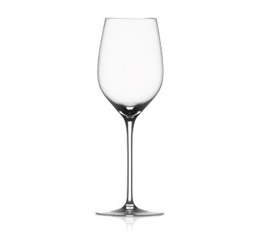
White wine glass
Has a smaller bowl than the red wine glass, since white wines don’t need to breathe as much as the red ones and the wine’s aromas do not evolve noticeably.
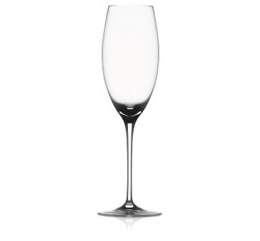
Champagne flute
A Champagne flute has a thin tulip shape, allowing the gas to last longer.
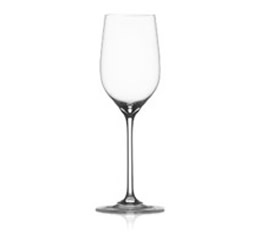 Port glass
Port glass
Port wine is served in small quantities; therefore the glass’s bowl is smaller. The top is narrower and should be completely filled, in order to release the aromas.
DECANTING
Glasses should be appropriate to the type of wine served. As this is not always possible, the ideal is to acquire a set of red, sparkling and Port wine glasses. The glass should be clear, with no adornment, in order to facilitate observation. It should have thin rim and walls and a good stem. You should hold the stem of the glass, not letting your fingers touch the bowl (upper part of the glass). The glass should be big enough to allow swirling the wine without spilling it and it should have capacity to hold approximately 60 to 80 ml of wine (which will occupy about 1/3 of the glass).
When serving wine, the glass should be perfectly clean and with no traces of detergent. You should always change glasses when serving new wines, otherwise there will be a mixture of flavours.
Ideally, hand-wash the glasses and use no detergent at all. Then, let them drain upside down for a minute or two. Dry the glasses with a clean cloth and store them upright on a closed shelf, away from dust and bad smells.
Decanting is almost a ceremonial act, as it requires practice and skill. The process consists in transferring the wine from the original bottle to a container, usually made of crystal, known as decanter. It is very usual in red wines, but not very common in white ones.
Two major benefits from decanting wine are the extraction of lees (formed during ageing) and the oxidation of the wine.
Oxygenation releases the aromas formed in the wines that have been bottle-aged for several years. In this case, decanting should be made just before serving the wine because the released aromas will quickly dissipate. In young red wines decanting softens the tannins (naturally rough) and should be performed two hours before the wine being served. If the wine is not rich in tannins, it should not be decanted; otherwise, the complexity of its aromas may disappear.
Decanting is an optional process that depends on personal preferences. However, it is convenient to decant a wine that has lees. When such a wine is served in the original bottle, the slightest movement will make the liquid mix with the sediment.



